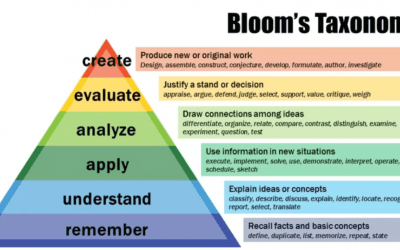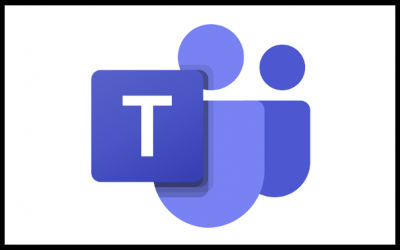Contributed to the TLCo-op by Alina Holmes, Graduate Research Assistant of the Center for Instructional Innovation and Assessment, 2020. Open Educational Resources (OER) are free, digital teaching resources including textbooks, journal articles, podcasts, video, and...
Open Textbooks
Contributed to the TLCo-op by Alina Holmes, Graduate Research Assistant of the Center for Instructional Innovation and Assessment, 2020. In this new digital world, something that might be worth considering is using an open, digital textbook. One of the benefits to...
Panopto Video Management at Western
Panopto is the primary media management tool for video at WWU. Panopto is an easy-to-use, centralized media/video management application that is integrated directly in Canvas to provide video recording, editing, uploads, streaming playback, automated video captioning,...
Panopto: A Playlist of WWU Panopto Videos
Explore the large collection of videos created by instructional designer, Kevin Dixey, and other ATUS staff. These videos may differ from what is shown in Panopto's documentation and better represent the WWU Panopto environment. Panopto is the primary media management...
Panopto: Adding Quiz Questions to a Video
Panopto: Setting Up Student Video Assignments
Preparing for a Successful Online Course: Communicating with Students
When creating an online course, there are some key details to keep in mind in order to ensure success for both you as an educator and your students. These include clearly communicating your intentions with your students from the start, being prepared technologically,...
Preparing for a Successful Online Course: Preparing Strategically
When creating an online course, there are some key details to keep in mind in order to ensure success for both you as an educator and your students. These include clearly communicating your intentions with your students from the start, being prepared technologically,...
Preparing for a Successful Online Course: Preparing Technologically
When creating an online course, there are some key details to keep in mind in order to ensure success for both you as an educator and your students. These include clearly communicating your intentions with your students from the start, being prepared technologically,...
Regular and Substantive Interaction (RSI) in Online Courses
Regular and Substantive Interaction is a United States Department of Education regulation that outlines the requirements for instructor interaction in online courses. These requirements help distinguish online courses from correspondence courses. Learn more about RSI...
Rethinking Workshop Models: The “Ikebana” Workshop Method
by Brenda Miller, Professor, English Department, WWU Why "Ikebana"? This model stems from what I experienced as a student in an Ikebana class here in Bellingham. Ikebana is the Japanese art of flower arranging; the compositions follow formal guidelines, but they also...
Syllabi@WWU: Syllabus Policies in One Place
In order to create a syllabus that is compliant with Western's policies, Syllabi@WWU serves as a collection of succinct syllabus policies and information all in one place--written for the student audience. Copy policies to your syllabus or link from your syllabus to...
Syllabus Co-Creation: Inviting Students to Collaborate About What they are Learning
Contributed to the TLCo-op by Alina Holmes, Graduate Research Assistant of the Center for Instructional Innovation and Assessment, 2020. If you are a professor who is looking to radically change your pedagogy and teaching this quarter, this post might be for you....
Teaching Handbook: Active Learning Toolkit
Active learning is an instructional approach that "involves students in doing things and thinking about the things they are doing," (Bonwell & Eison, 1991, p.2). Use the Active Learning Toolkit as a resource to develop active learning techniques in the...
Teaching Handbook: FERPA Toolkit
FERPA compliance is essential in the classroom, but sometimes keeping up with FERPA compliance in a technologically advanced classroom can be confusing. Learn more about FERPA best practices... Teaching Handbook: FERPA Toolkit Image Attribution: Chintuzza - The Noun...
Teaching Handbook: Inclusive Teaching Toolkit
Creating an inclusive environment in the classroom is an essential skill to learn and the Inclusive Teaching Toolkit has resources to learn more about the subject. Visit the toolkit... Teaching Handbook: Inclusive Teaching Toolkit See also: Teaching Handbook: Social...
Teaching Handbook: Open Educational Practices Toolkit
Explore this collection of ideas for using open educational resources in the practice of teaching, activities, assignments, as well as materials. Learn more about Open Educational Practices: WWU Teaching Handbook: Open Educational Practices Toolkit See also:...
Teaching Handbook: Social Justice Toolkit
Engaging in social justice in a classroom setting is essential and the Teaching Handbook's Social Justice Toolkit has resources to learn more about the subject. Visit the toolkit... Teaching Handbook: Social Justice Toolkit See also: Building Classroom Community...
Teaching Handbook: Syllabus Guidelines
When developing a syllabus, it is important to review Western's guidelines. Explore this resource as you create an informative syllabus that will answer students' questions and state expectations. Teaching Handbook: Syllabus Guidelines See also: Syllabi@WWU - syllabi...
Theory of Margin (Power-Load-Margin)
Contributed to the TLCo-op by Emily Gaston, Graduate Research Assistant of the Center for Instructional Innovation and Assessment, 2021. The Theory of Margin, also known as the Power-Load-Margin (PLM) formula was McClusky's major contribution to adult and higher...
Top Tips for Online Student Engagement
by Meg Weber, Director of Community Engagement and Executive Education, Head Instructor, Entrepreneurship and Innovation Program, WWU As faculty members, so often we can feel like our connection with students is less than it was in the past. We recall bustling days of...
Trauma-Informed Teaching
All students enter a classroom with diverse backgrounds and experiences. Their experiences could possibly include trauma which the Substance Abuse & Mental Health Services Administration (SAMHSA) defines as: “an event, series of events, or set of circumstances...
Updating Bloom’s Taxonomy
When Bloom's Taxonomy was first published in 1956, it changed how educators categorized their educational objectives and goals. Within the original framework, there were six categories that educators could use to gauge how students were engaging with material and to...
Using Big Ideas for Course Design
What's the Big Idea? “Assuming for the moment that this course is the LAST course the students will ever take in the area (as opposed to the first in a series of courses), what core discipline-specific ideas/concepts do you want ALL students taking the course to...
Using Microlearning to Improve Teaching
Definition Microlearning is learning bursts of new information in small parts at a time. Some key features tend to include1: Sessions under 10 minutes Targeted simple and/or narrow topics Tasks be completed in-person or virtually Information paired...
Using Microsoft Teams in your Online or Hybrid Course
Explore the ATUS page, Using Microsoft Teams in your Online or Hybrid Course, to learn how to use Microsoft Teams educators to schedule and conduct online class discussions and course lectures, conduct online office hours, securely record student presentations, and...
Using the Canvas Chat Tool
This video from WWU's Instructional Design Video Library provides an overview of adding the Canvas (simple) chat menu item and using it in your class. For assistance with Canvas, see: Canvas Help at WWU.




















